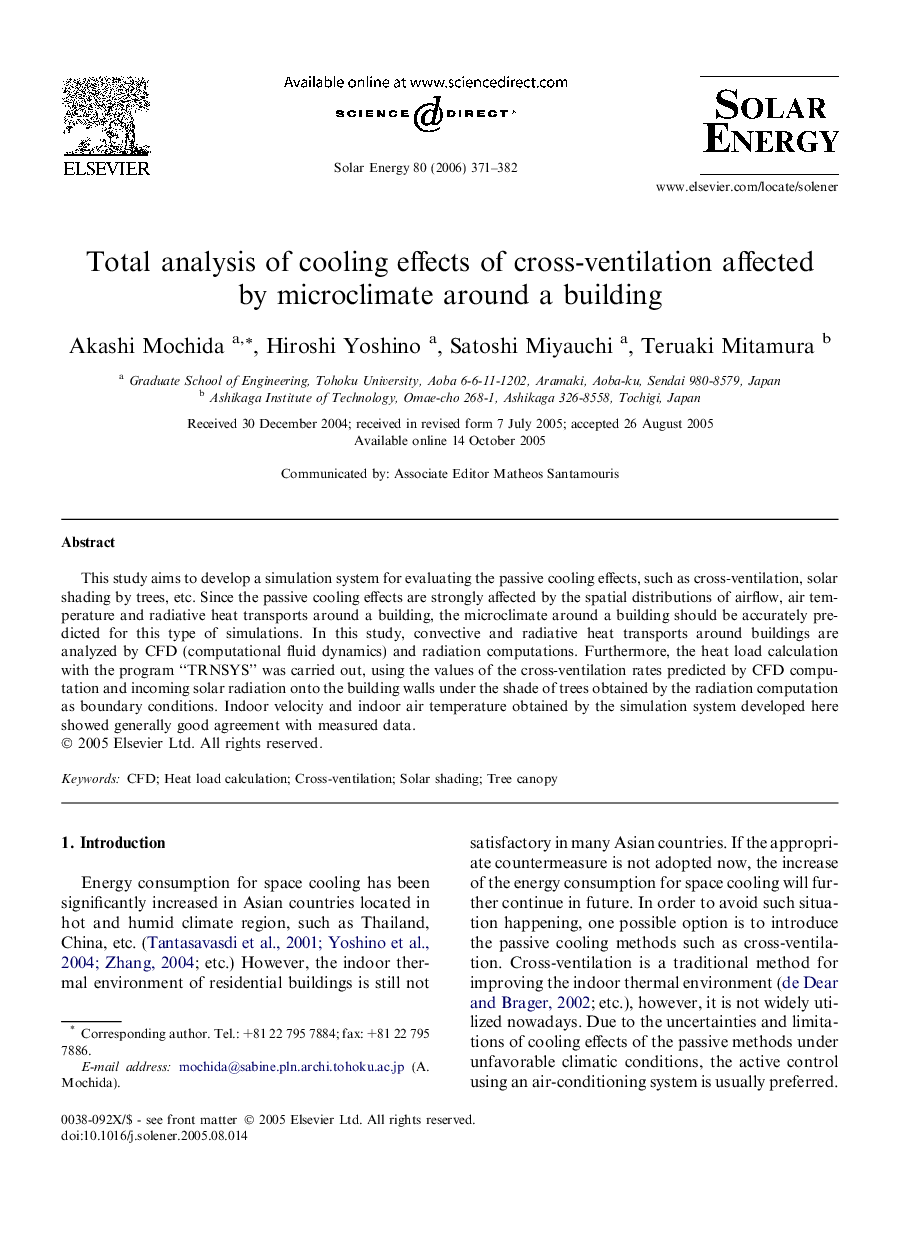| Article ID | Journal | Published Year | Pages | File Type |
|---|---|---|---|---|
| 1552383 | Solar Energy | 2006 | 12 Pages |
This study aims to develop a simulation system for evaluating the passive cooling effects, such as cross-ventilation, solar shading by trees, etc. Since the passive cooling effects are strongly affected by the spatial distributions of airflow, air temperature and radiative heat transports around a building, the microclimate around a building should be accurately predicted for this type of simulations. In this study, convective and radiative heat transports around buildings are analyzed by CFD (computational fluid dynamics) and radiation computations. Furthermore, the heat load calculation with the program “TRNSYS” was carried out, using the values of the cross-ventilation rates predicted by CFD computation and incoming solar radiation onto the building walls under the shade of trees obtained by the radiation computation as boundary conditions. Indoor velocity and indoor air temperature obtained by the simulation system developed here showed generally good agreement with measured data.
